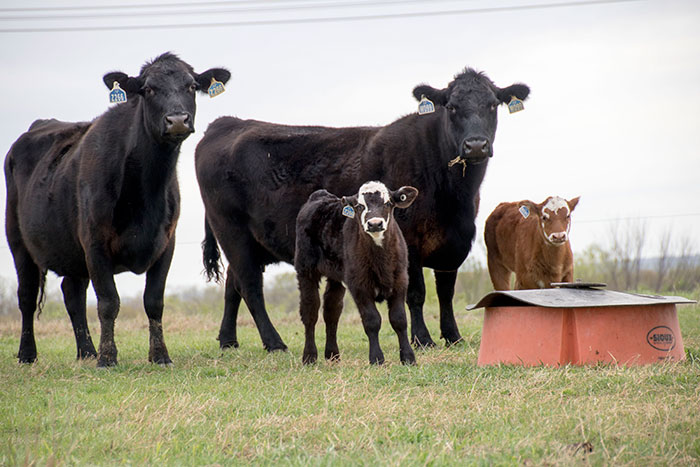Spring brings grass tetany |
| By Sydney Sleep |
|
|
|
It is welcoming to watch pastures green up in the spring; however, the unique growth of the spring flush brings with it some potential problems for cattle. Grass tetany is a nutritional disease that mainly affects the metabolism of older lactating cows but can also affect any lactating cattle with low body condition scores or that are off feed. According to Heidi Ward, D.V.M., and University of Arkansas assistant professor, a low level of dietary magnesium in the blood causes grass tetany. This leads to low levels of magnesium in the cerebral spinal fluid (CSF), which can cause neurological symptoms and death. “Forage grown in soils naturally high in potassium and fertilized with potash and nitrogen are high-risk areas for grass tetany,” says Ward in the University of Arkansas’ Dairy e-News. Cattle do not have the ability to store magnesium, and magnesium absorption from the rumen is reduced when potassium and nitrogen intakes are high. When affected, a cow may graze normally but walk stiffly and be hypersensitive to touch and sound. If left untreated, more severe symptoms can develop, including bellowing, running blindly, falling, and seizures. The neurological symptoms are due to the low magnesium in the CSF causing hyperexcitability of the nervous system. When the cow starts to have seizures, little time is left to intervene before death. “Animals showing clinical signs must be treated immediately to correct the low magnesium levels before they start experiencing seizures,” Ward says. For treatment, slowly administer CMPK (calcium, magnesium, phosphorus, and potassium) electrolyte solution intravenously while listening to the heart. The solution can only be purchased with a prescription, so plan ahead with your veterinarian for emergency situations. When the initial injection of CMPK is given, magnesium levels can be maintained through oral CMPK gel or solution. Perform treatment in a quiet area to prevent the triggering of seizures. To prevent grass tetany, test the soil before making any fertilization decisions. Adding phosphorus fertilizer to low phosphorus soil can boost magnesium concentrations in the forage. Legumes like clover and alfalfa typically have higher magnesium content than ryegrass and can be planted for grazing on adapted sites. Also, providing extra magnesium in the mineral mix can help prevent grass tetany. Testing the feed ration for mineral content is important to balance the overall nutritional mineral intake.  Sydney Sleep
Sydney Sleep was the 2016 Hay & Forage Grower summer editorial intern and is a junior at South Dakota University. |

